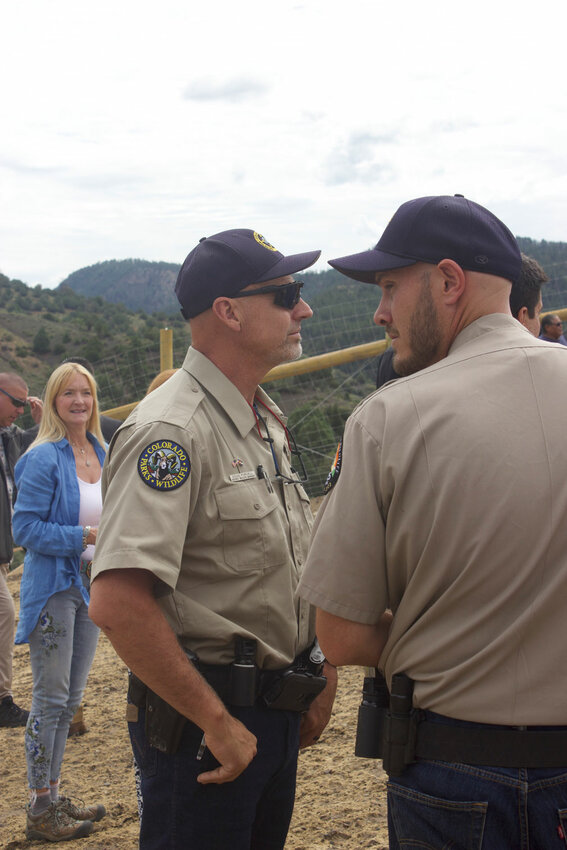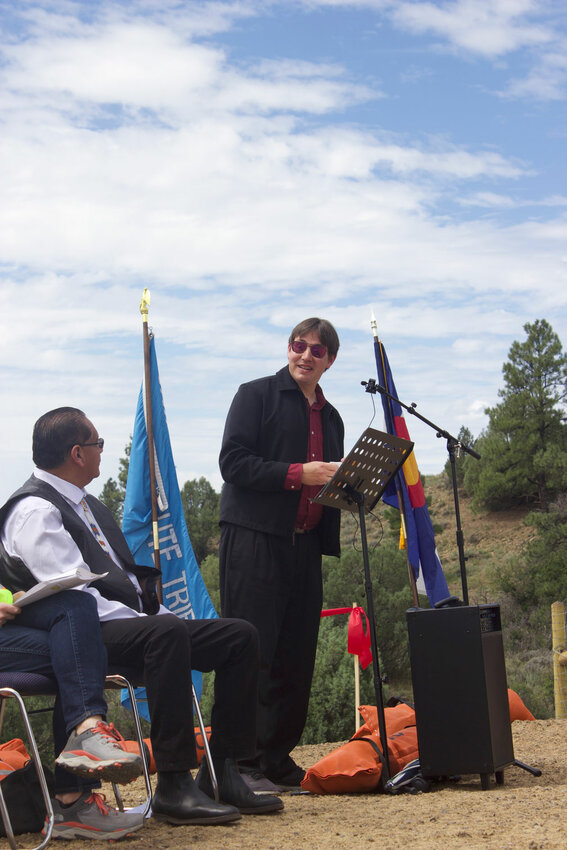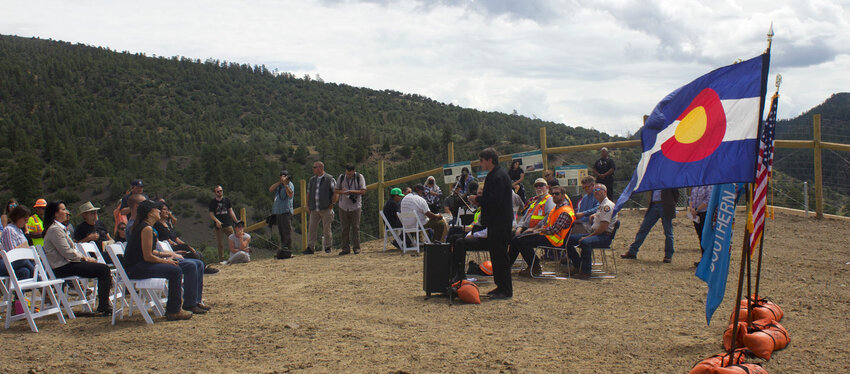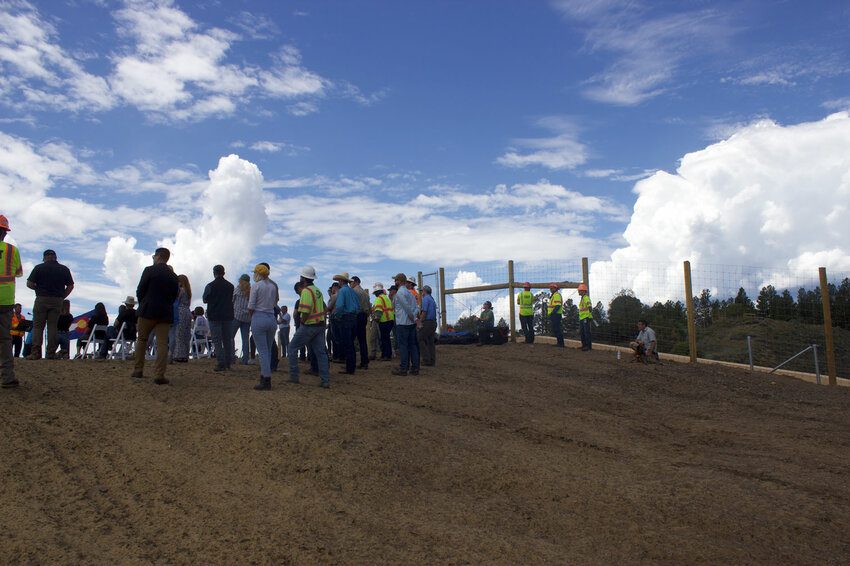




SUN photos/Dorothy Elder
The celebration of the completion of the U.S. 160 Wildlife Crossing Project on U.S. 160 on July 28. Attendees included Colorado Department of Transportation and Colorado Parks and Wildlife officials, Southern Ute Tribe officials, Colorado First Gentleman Marlon Reis and community members. The wildlife mitigation feature, which started construction in March of 2021, was created to enable safe wildlife passage and reduce wildlife-vehicle collisions.
Colorado Department of Transportation
A busy highway can be a barrier to wildlife movement. To help big game find their way across the road, a wildlife overpass was recently completed over U.S. 160 between Pagosa Springs and Bayfield.
The project also included an animal underpass, 2 miles of exclusion fencing, several earthen escape ramps and a deer guard at the Colo. 151 junction.
The wildlife mitigation project will enhance safety for this section of the highway by promoting safer travel for motorists, enhancing the safer movement of wildlife and reducing wildlife-vehicle collisions.
Last week, The Colorado Department of Transportation (CDOT) hosted a ribbon-cutting celebration atop the wildlife arch over the highway. The event highlighted the benefits of the project and recognized the partnerships among government agencies, public organizations, nonprofit groups and private individuals that made the project possible.
“This crossing not only improves safety for our state’s wildlife — animals like mule deer, elk and bears — but it secures protection for Coloradans in their vehicles,” said Marlon Reis, Colorado’s first gentleman.
More than 60 percent of all crashes in the project area are attributed to wildlife-vehicle collisions. Without the mitigation treatment, these numbers were expected to grow as wildlife-vehicle crashes continue to show an increasing trend since 2012. The project’s wildlife safety features are expected to reduce those wildlife-vehicle collisions by 85 percent.
Dignitaries on hand for the wildlife crossings celebration included the Southern Ute Tribal chairman and council members, Colorado’s first gentleman, Federal Highway Administration representatives, Colorado Parks and Wildlife representatives, and CDOT executive management and regional staff.
Gathering atop the wildlife overpass structure, the Southern Ute Bear Dance chief offered a special blessing, the Southern Ute Singers drummed an honor song and government officials spoke, noting the significance and benefits of the highway safety project.
Collaborative efforts have leveraged this and other wildlife mitigation projects in Colorado, making the construction of these highway features more feasible for CDOT. While many agencies and organizations come forward with valuable project funding, other contributions from various entities may include resources like studies, research and development plans. For example, the Southern Ute Indian Tribe provided support with critical Global Positioning System data, which identified seasonal migration patterns and habitat for mule deer and elk in the San Juan Basin area.
“Nineteen years ago, the tribe deployed its first set of GPS radio collars on mule deer. The results of those collars hinted at the importance of this particular spot and stretch (of roadway) as a migratory crossing point (for big game) on Highway 160,” said Aran Johnson, Southern Ute tribal wildlife biologist.
Partners involved in the U.S. 160 wildlife crossings project include:
• CDOT ($9.458 million).
• Southern Ute Indian Tribe ($1.3 million, studies and research).
• Colorado Parks and Wildlife ($750,000, studies and research).
• National Fish and Wildlife Foundation ($317,000).
• Mule Deer Foundation ($100,000).
• Rocky Mountain Elk Foundation ($75,000).
• Federal Highway Administration (administration of federal aid and safety funding)
• Colorado Wildlife and Transportation Alliance (partnership and fundraising development).